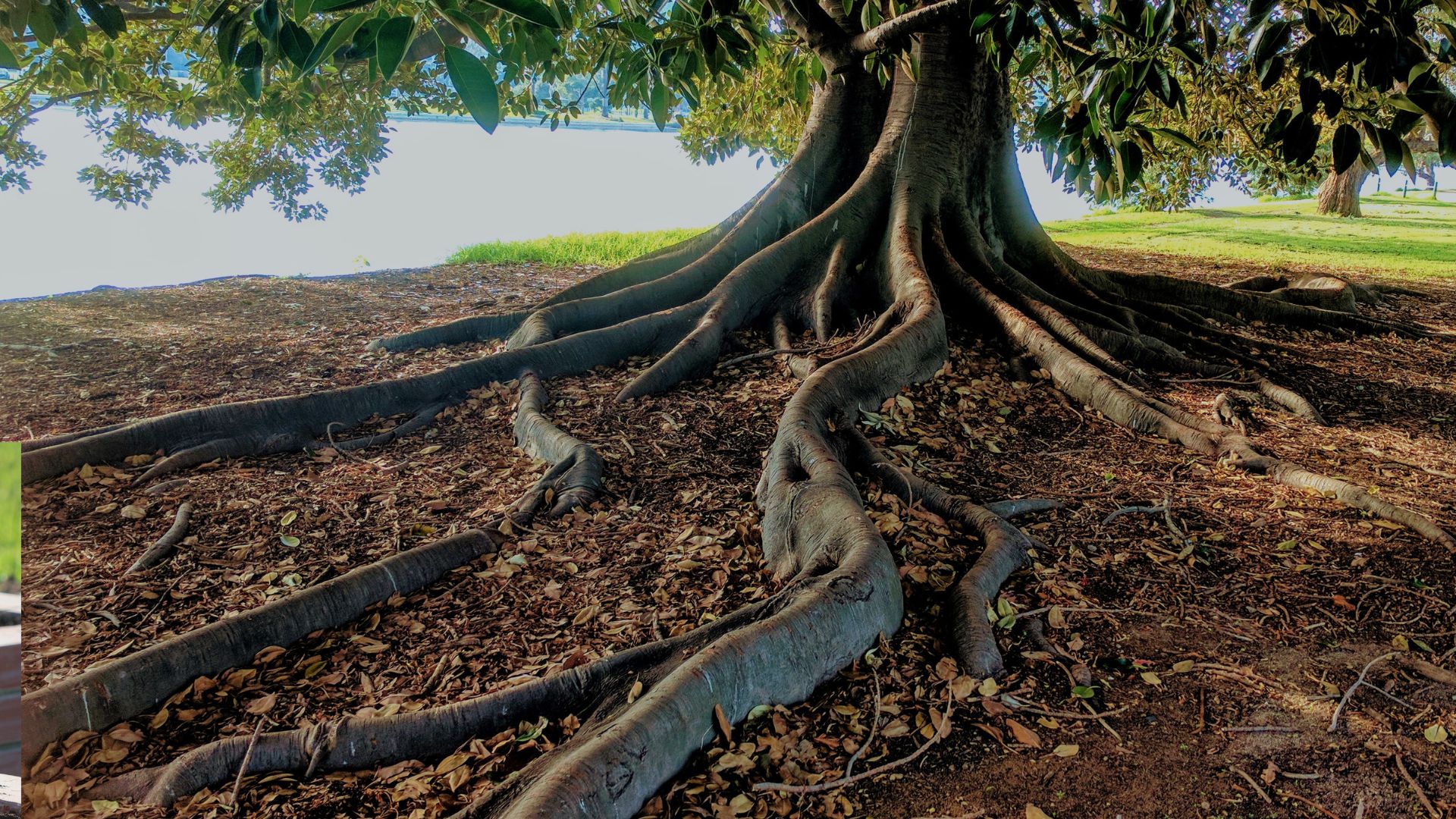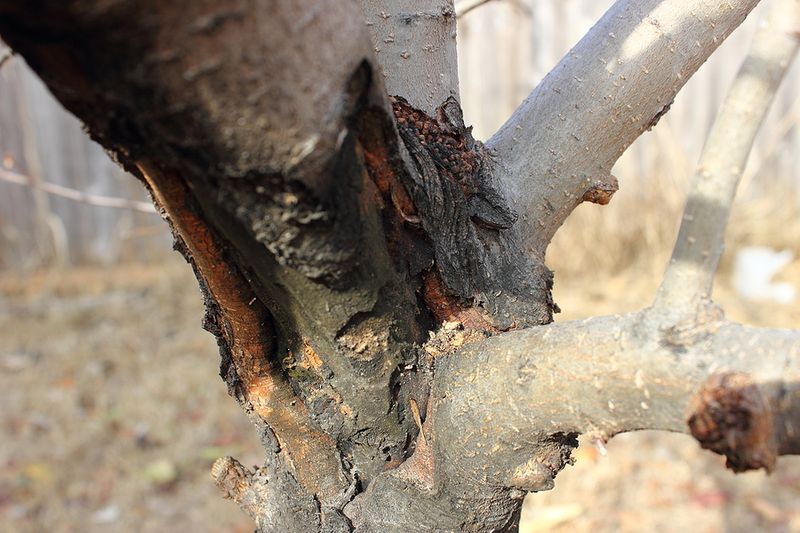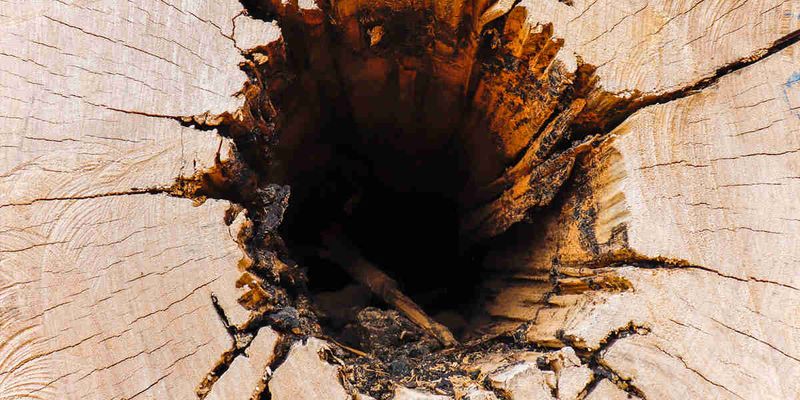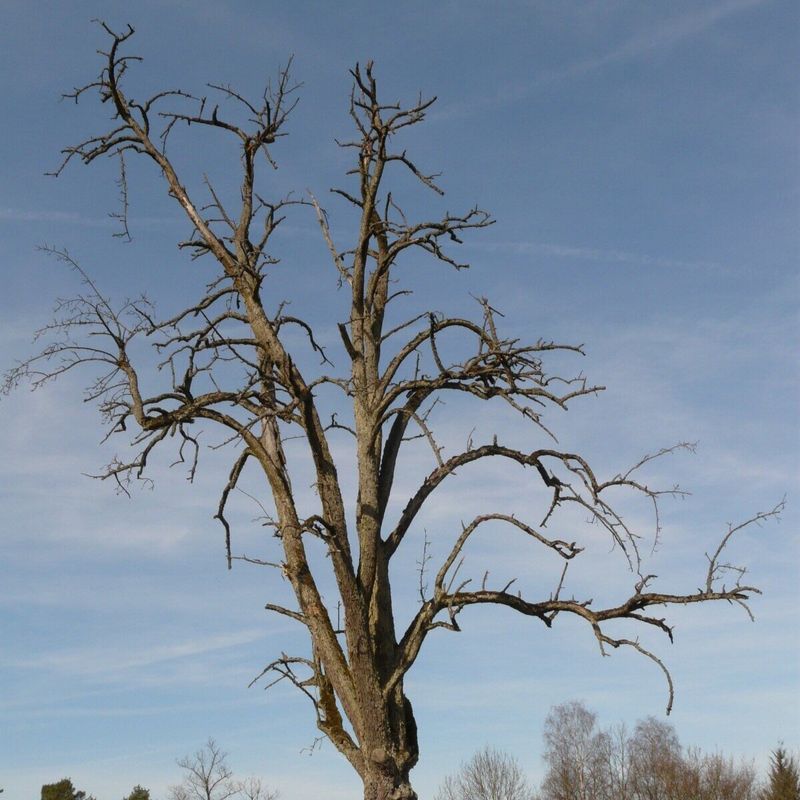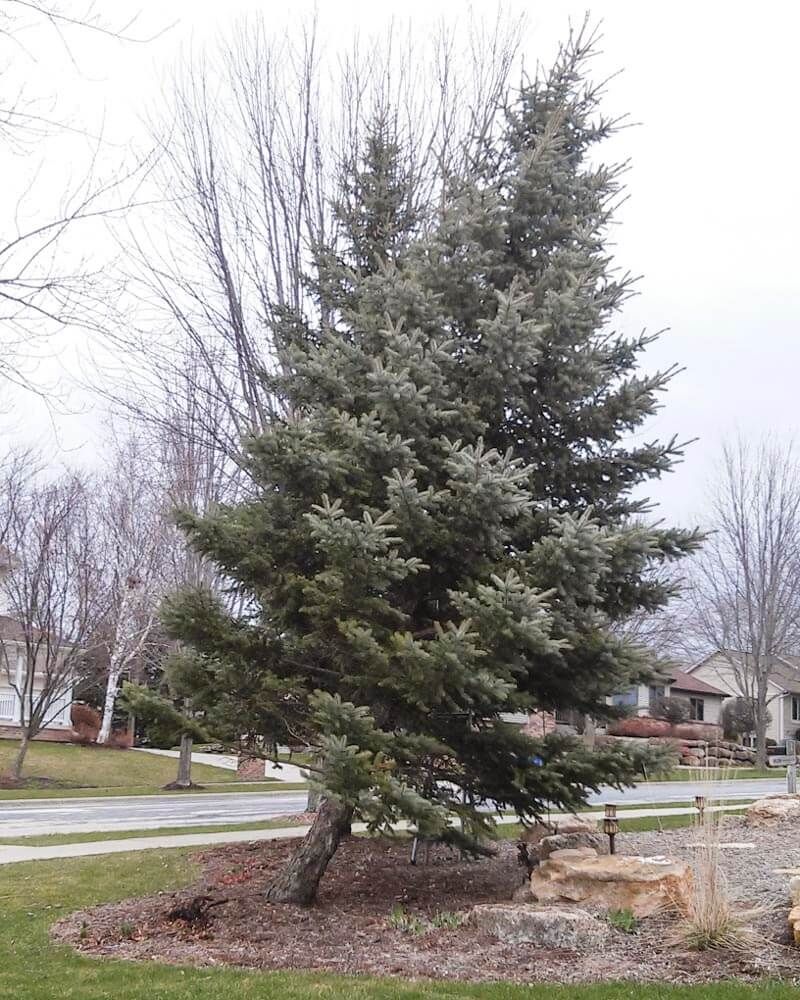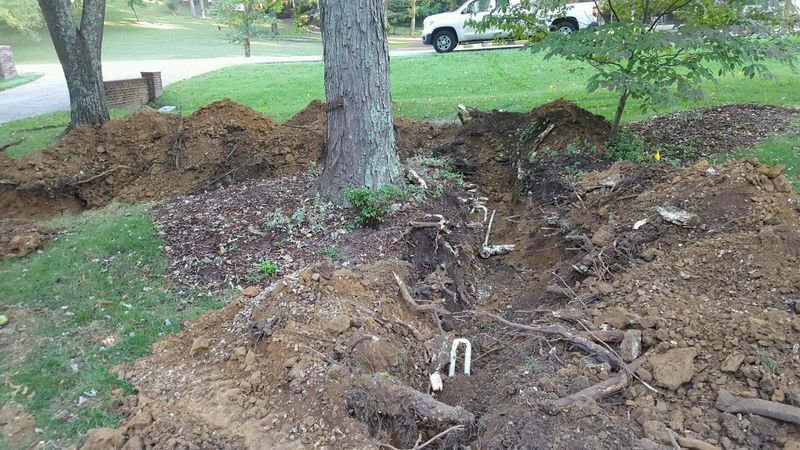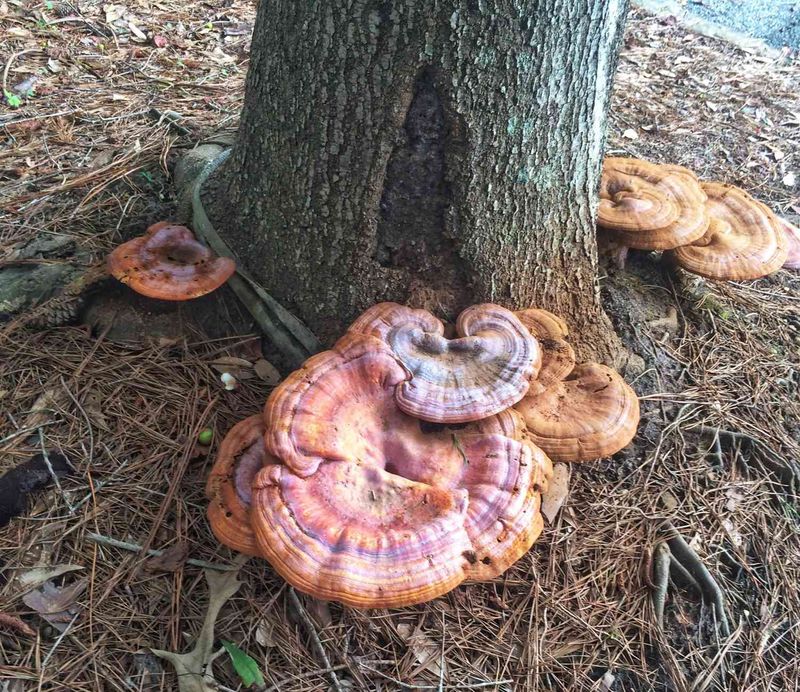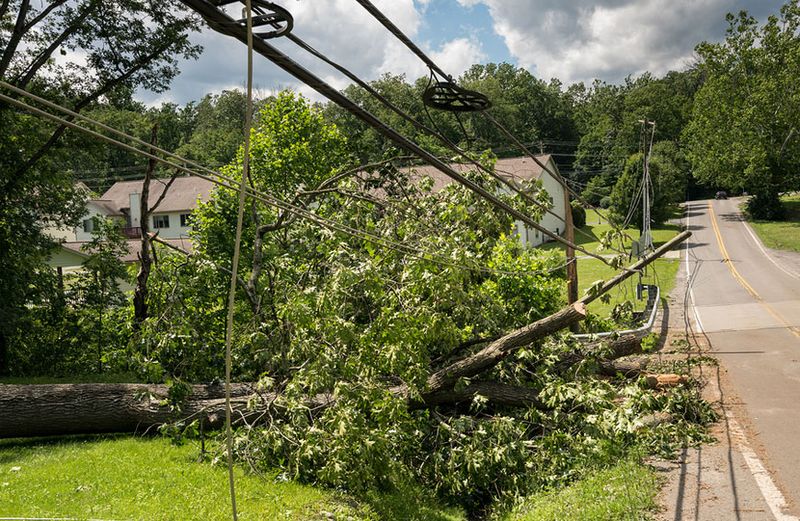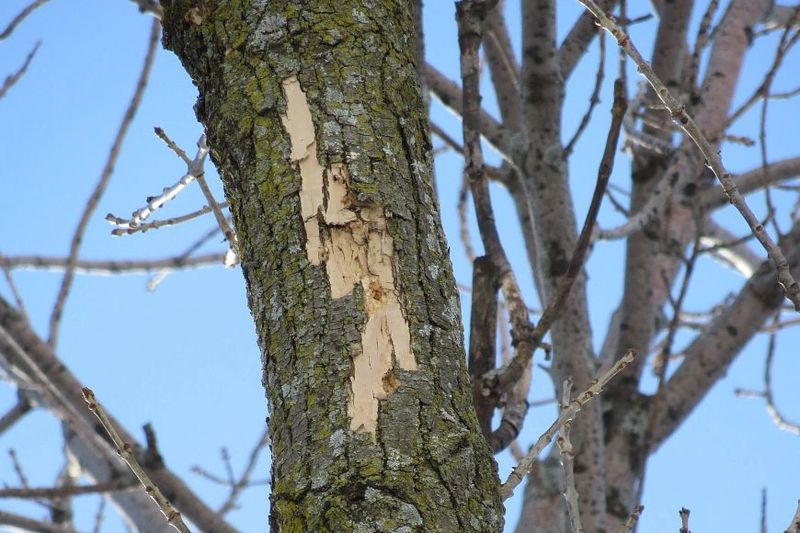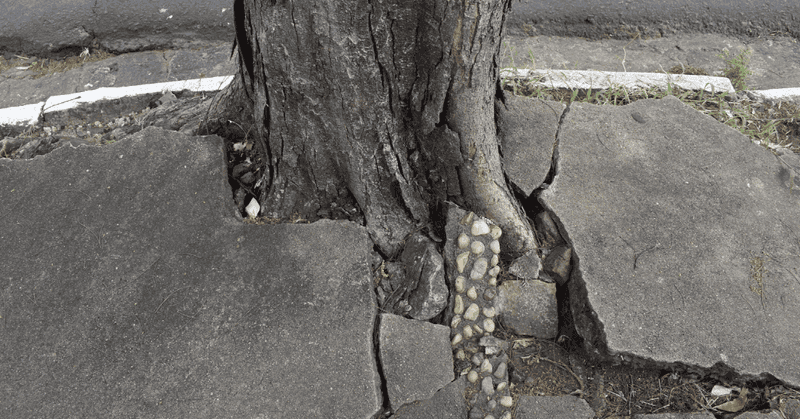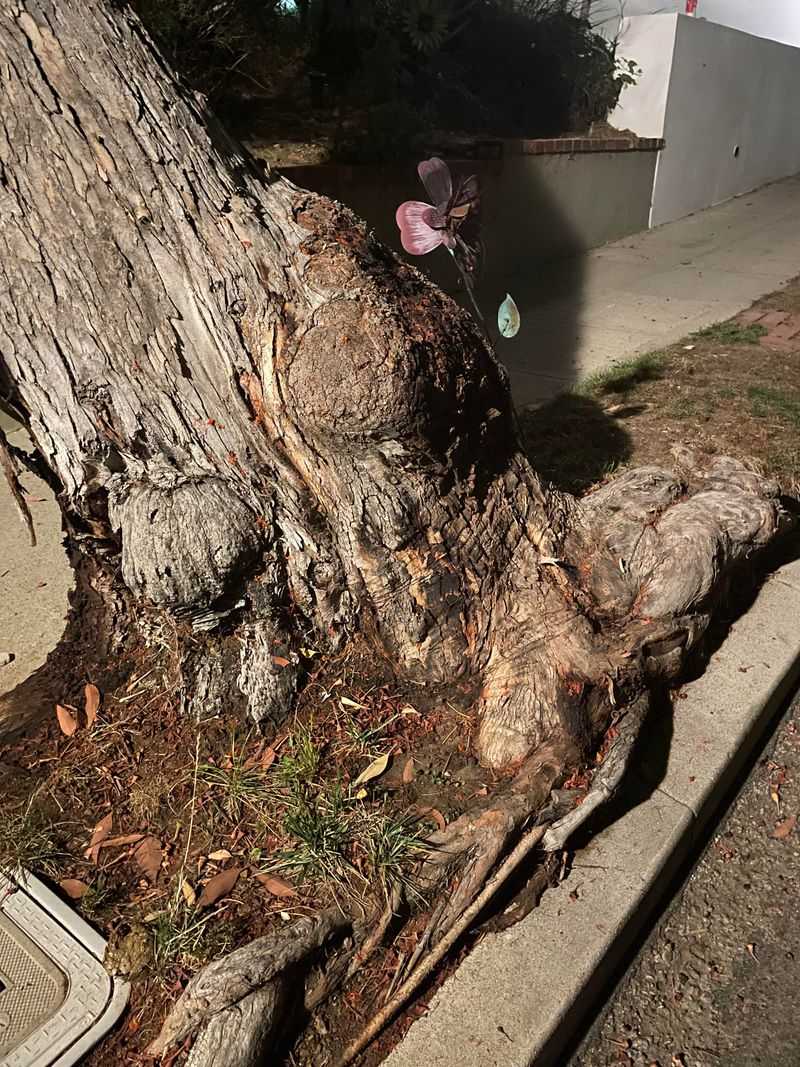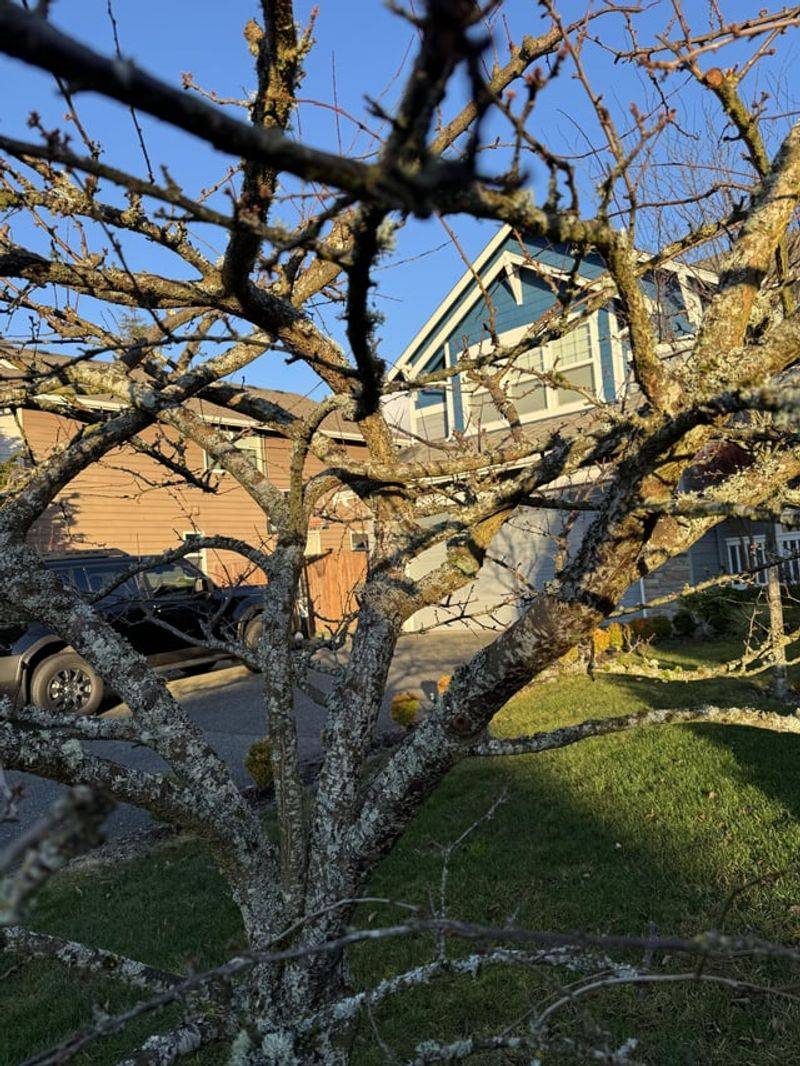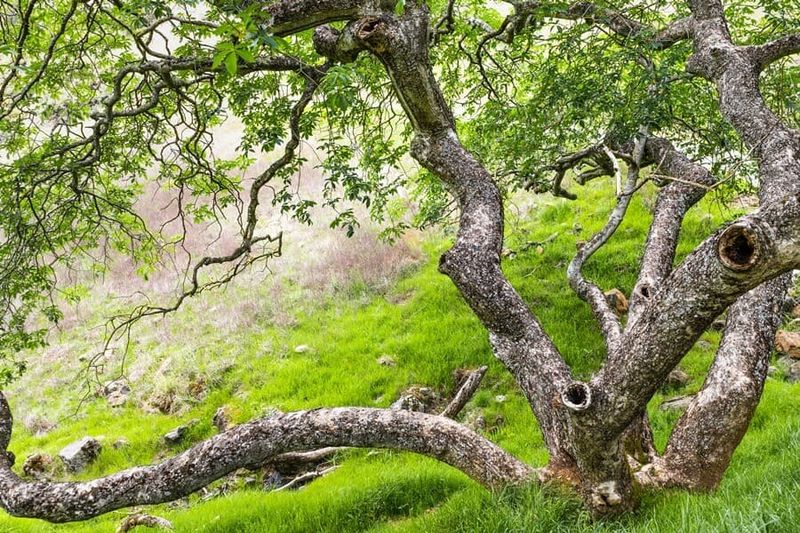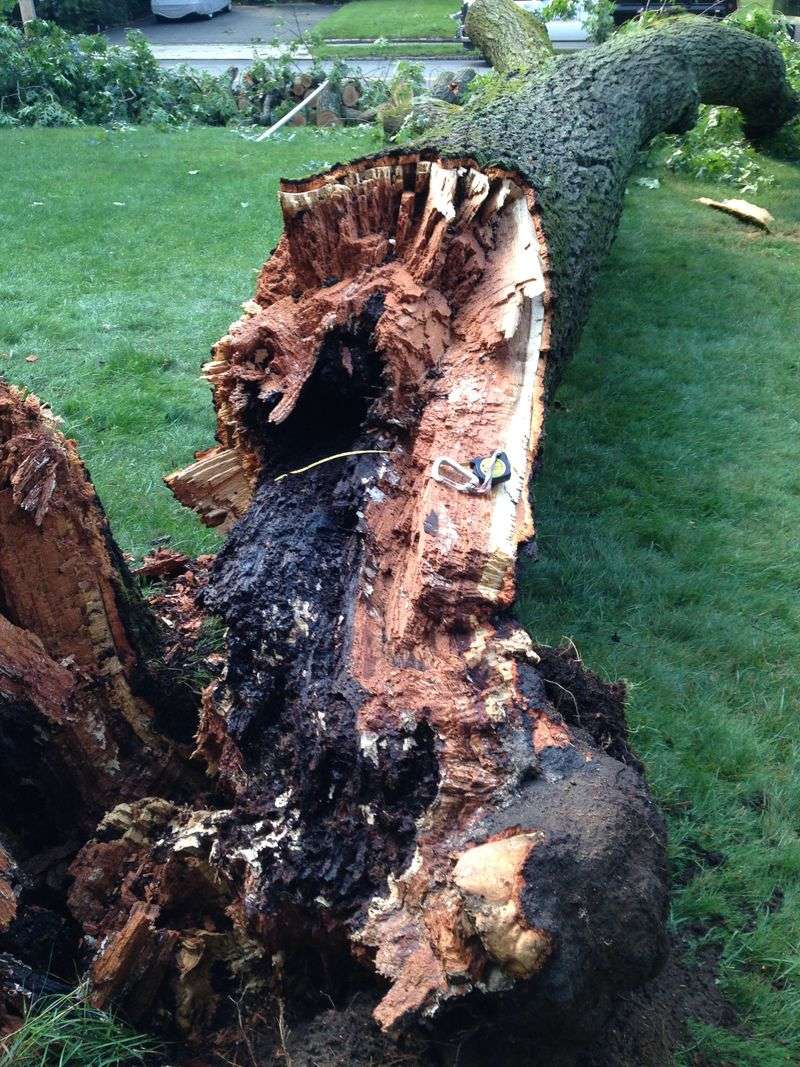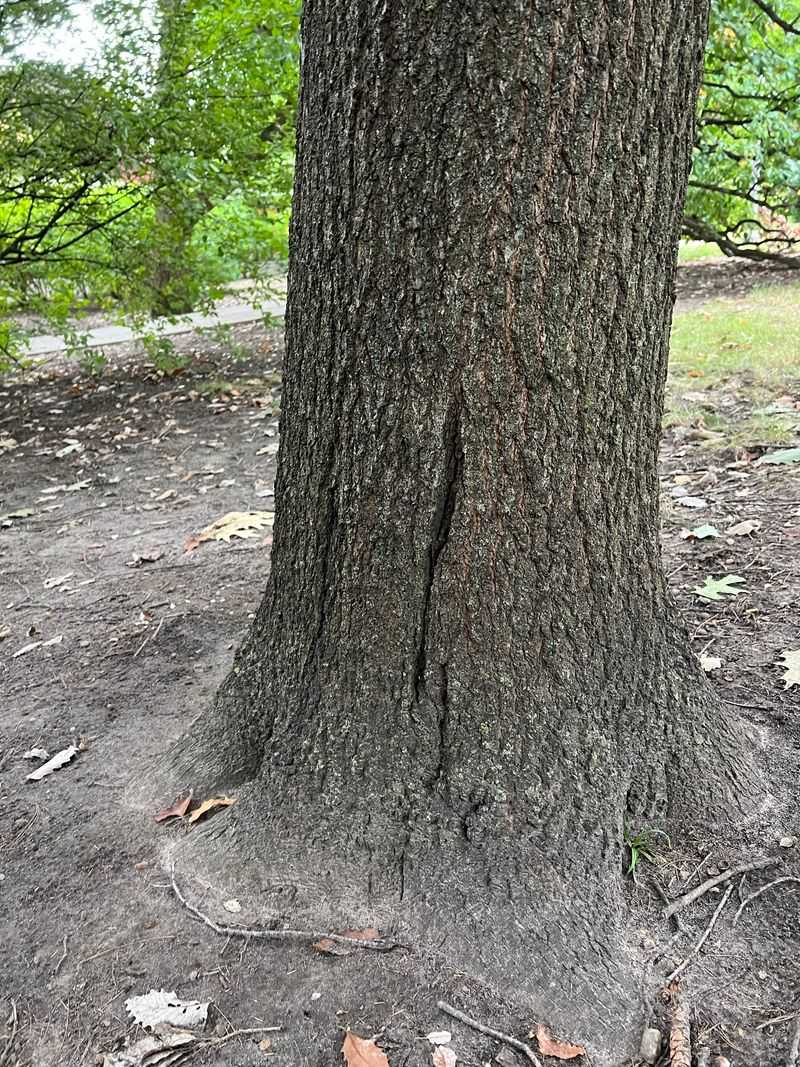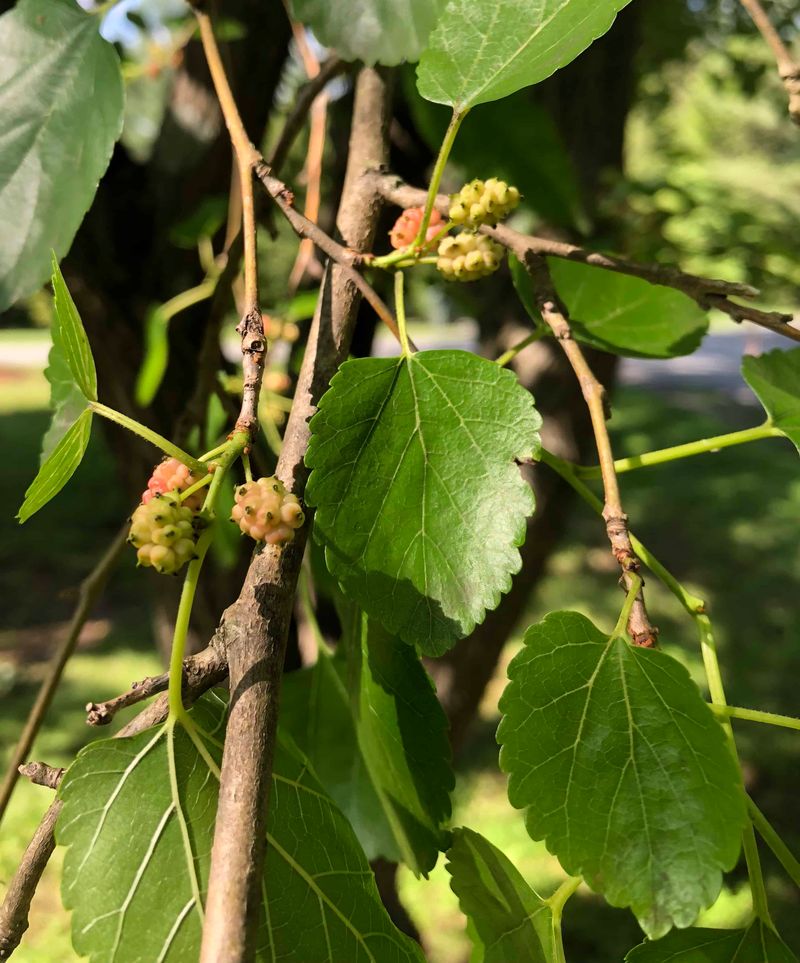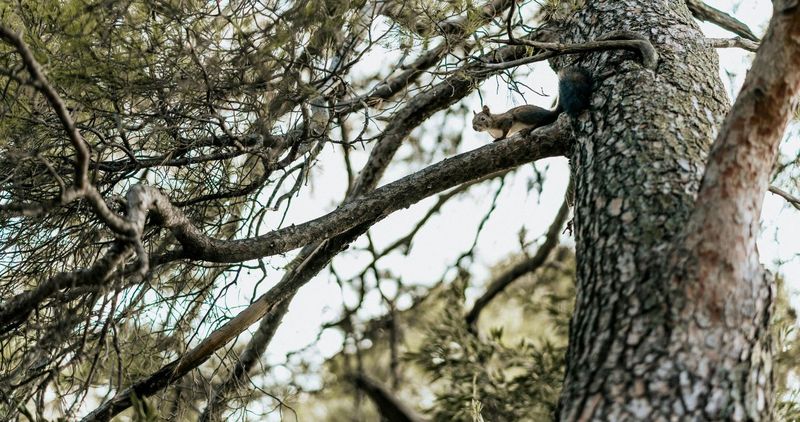Trees bring so much character and shade to a yard—I’ve always loved the way they make a space feel established and peaceful. But sometimes, a tree that once felt like a gift starts to raise concerns. I’ve had to face the tough decision of removing one, and it’s never easy.
The tricky part is knowing when it’s truly time to take action. Some issues can wait and be watched, while others pose real risks to your home or safety. Catching the warning signs early can save you from a lot of heartache—and some hefty repair bills.
In this guide, we’ll walk through the signs that mean it’s time to call a pro, and a few cases where it’s okay to hold off. Because when it comes to trees, a little knowledge can go a long way in keeping your yard safe and beautiful.
1. Significant Trunk Damage Reveals The Tree’s Inner Layers
When a tree’s trunk shows deep cracks or splits that expose what’s inside, it’s usually in serious trouble. These wounds are like open doors for diseases and pests to enter and attack the tree from within.
I learned this lesson the hard way after a storm damaged the oak in my front yard. What started as a small crack quickly expanded, revealing the yellowish inner wood. Within months, fungus began growing from the wound.
Large vertical cracks, missing bark that doesn’t grow back, or seeping fluid from the trunk are all red flags that the tree’s structural integrity is compromised. These issues rarely heal on their own.
2. Hollow Areas Indicate Internal Decay
Finding hollow spots in your tree is never a good sign. These empty spaces develop when fungi consume the wood from the inside out, leaving nothing but a shell that can snap or collapse without warning.
You might notice wildlife making homes in these cavities—a charming sight but a terrible sign for tree health. Last summer, I watched a family of squirrels disappear into a hole in my maple tree, which prompted me to call an arborist immediately.
To check for hollowness, gently tap the trunk with a rubber mallet. A hollow sound instead of a solid thud suggests internal decay that might be far more extensive than what’s visible from the outside.
3. Large Dead Branches Pose Immediate Danger
Dead branches larger than 2 inches in diameter hanging over your house, driveway, or anywhere people gather are accidents waiting to happen. Unlike living wood that bends in the wind, dead branches snap easily during storms or even on calm days.
My neighbor ignored several dead limbs on his elm tree until one crashed through his windshield during a mild breeze. The incident could have been much worse if someone had been in the car.
While a few small dead branches are normal, multiple large ones suggest the tree is struggling to survive and redirecting resources to its healthiest parts. This pattern usually worsens over time rather than improving.
4. Leaning Trees That Suddenly Change Position
All trees grow with some natural lean, but a sudden change in angle is cause for immediate concern. When a tree begins tilting unexpectedly, it often means the root system has been compromised and can no longer properly anchor the tree.
After heavy rains last spring, I noticed our 30-year-old pine had shifted about 15 degrees toward the house. Fresh soil cracks around the base confirmed the roots were failing. We had it removed the next day.
Look for exposed roots on the opposite side of the lean or a mound forming around the base. These signs indicate the tree is literally being uprooted and could fall at any moment.
5. Root Damage Makes The Tree Unstable
Healthy roots are a tree’s foundation, but they’re often damaged during construction, utility work, or severe weather. When 30-40% of a tree’s roots are damaged or diseased, the entire tree becomes dangerously unstable.
The signs aren’t always obvious. You might notice the lawn lifting near the tree, fungi growing at the base, or branches dying back despite proper watering. My own red maple started dropping leaves in summer after a neighbor’s trenching project cut through part of its root system.
Root damage is particularly concerning for large trees near structures. Without their full root system, these giants can topple in winds they previously withstood with ease, causing catastrophic damage.
6. Fungal Growth Signals Internal Decay
Finding mushrooms or shelf-like fungi growing on your tree’s trunk or around its base is a serious warning sign. These aren’t just surface decorations—they’re the visible parts of fungi that are actively decomposing your tree from the inside.
When I spotted orange shelf fungi on our old cherry tree, I initially thought they looked interesting. An arborist later explained they were actually the final stage of a fatal infection that had been spreading unseen for years.
Different fungi indicate different problems, but most mean extensive internal decay has already occurred. By the time you see the mushroom “fruit,” the invisible network of fungal threads has typically spread throughout large sections of the tree.
7. Trees Growing Under Power Lines Create Hazards
That sapling you planted years ago might now be reaching dangerously close to power lines. Trees touching electrical lines can cause power outages, fires, and even electrocution during storms when wet branches become conductors.
Utility companies regularly trim trees near power lines, but their harsh pruning often leaves trees lopsided and unhealthy. My street’s once-beautiful maples were cut into awkward V-shapes that never recovered their natural form and eventually became unstable.
If your tree requires constant pruning to keep it clear of power lines, removal might be the better long-term solution. You can then replace it with a species that won’t grow tall enough to reach the lines.
8. Trees Infected With Untreatable Diseases
Some tree diseases have no cure and spread quickly. Dutch elm disease, emerald ash borer damage, and oak wilt are examples of conditions that typically result in a death sentence for affected trees.
The ash trees in our neighborhood were beautiful until emerald ash borers arrived. Within two years, we watched dozens of trees die despite treatment attempts. Those removed early prevented the beetles from spreading to neighboring properties.
Signs of these fatal diseases include rapid leaf discoloration out of season, branches dying from the top down, or D-shaped exit holes in the bark. When certified arborists confirm such infections, prompt removal often becomes the responsible choice to protect other trees.
9. Roots Damaging Foundations Or Utilities
Tree roots grow far wider than most people realize, often extending two to three times the height of the tree. When these powerful roots encounter foundations, driveways, or underground pipes, they can cause expensive structural damage.
A friend’s century-old oak started lifting her patio pavers, and later investigation revealed roots had cracked her home’s foundation. The repair costs far exceeded what early tree removal would have cost.
Watch for concrete lifting, unusual cracks in walls, or repeatedly clogged sewer lines—all potential signs that tree roots are causing trouble underground. Trees planted too close to structures almost always lead to these conflicts eventually.
10. Excessive Lean Threatens Nearby Structures
Trees naturally grow toward available light, but when they lean more than 15 degrees from vertical, especially toward buildings or high-traffic areas, they become risky. The weight distribution makes them particularly vulnerable during storms.
A pine in my backyard developed a gradual lean over several years. I wasn’t concerned until an arborist pointed out how the entire root plate was slowly lifting on one side. He explained that soil compaction from my patio installation had killed roots on one side, causing the increasing tilt.
Calculate the fall radius by measuring the tree’s height. If your leaning tree would hit something valuable within that radius, removal might be the prudent choice before nature makes the decision for you.
11. Crossing Branches Create Weak Points
When branches rub against each other, they create wounds that invite disease and weaken the tree’s structure. These crossing branches often break during storms, becoming projectiles that can damage property.
I ignored the crossed branches in my backyard maple until one snapped during a windy day, narrowly missing my garden shed. The break revealed dark, decayed wood where the branches had been rubbing for years.
While minor branch crossings can be pruned, extensive crossing throughout the canopy often indicates the tree was improperly maintained from a young age. In mature trees, correcting these issues sometimes requires such extensive pruning that it further weakens the tree.
12. The Tree Is Clearly Dead
This might seem obvious, but many homeowners delay removing dead trees, not realizing how quickly they become hazards. A dead tree has no flexibility and becomes increasingly brittle as it dries out.
The maple at the edge of our property died gradually over two summers. First, the leaves came in smaller, then some branches remained bare, and finally, the bark began sloughing off. By the time we accepted it was truly dead, it had become a lightning risk and habitat for destructive insects.
No leaves during the growing season, brittle branches that snap easily, and bark that falls off in large pieces are unmistakable signs. Dead trees should be removed promptly as they become more dangerous and difficult to remove with each passing month.
13. Signs Of Internal Rot Are Visible
Trees can look healthy on the outside while hiding extensive decay within. Watch for mushroom-like growths on the trunk, soft or crumbly wood, or areas where the tree appears swollen or deformed.
During a windstorm, my apparently healthy oak dropped a massive limb. The break revealed completely hollow wood inside—something I’d have known about had I noticed the small shelf fungi growing near the base months earlier.
Another telltale sign is carpenter ants. These insects don’t cause the initial damage but are attracted to already decaying wood. Their presence, especially in large numbers, often indicates hidden rot that has created ideal nesting conditions inside your tree.
14. Wait If The Tree Only Has Minor Damage
Not all tree problems warrant immediate removal. If less than 25% of the tree shows damage and the core structure remains sound, waiting and monitoring might be the better approach.
After a hailstorm damaged some branches on my young maple, I was ready to call for removal. A consulting arborist suggested pruning the damaged limbs instead, explaining that the tree would likely recover completely with proper care.
Minor issues like a few dead branches, superficial wounds, or seasonal leaf problems often resolve with proper pruning, fertilization, and watering. Give a mostly healthy tree time to recover before making the irreversible decision to remove it, especially if it’s a valuable mature specimen.
15. Wait If The Tree Is Simply Messy But Healthy
Some trees naturally drop fruits, nuts, sap, or small branches that create cleanup headaches. However, these characteristics alone don’t justify removal if the tree is otherwise healthy and structurally sound.
The sweet gum tree in my front yard drops those spiky seed balls that are painful to step on. Rather than removing this perfectly healthy shade tree, I invested in a good rake and schedule regular cleanups during the dropping season.
Consider alternatives to removal for messy trees: strategic pruning, installing gutter guards, or creating mulched areas under the tree where droppings won’t matter as much. The environmental benefits of a mature tree often outweigh the maintenance inconveniences it creates.
16. Wait If The Tree Just Needs Proper Pruning
Trees sometimes develop alarming appearances that proper pruning can correct. Overgrown limbs, minor deadwood, or a slightly unbalanced canopy rarely require the extreme solution of removal.
When we moved into our home, the previous owners had neglected the yard for years. The ornamental cherry looked terrible—densely overgrown with crossing branches. An arborist performed careful pruning over two seasons, transforming it back into the showcase tree it was meant to be.
Professional pruning can often address safety concerns while preserving the tree. For mature specimens, this approach maintains their benefits—shade, wildlife habitat, property value—while eliminating the specific issues that caused concern.

